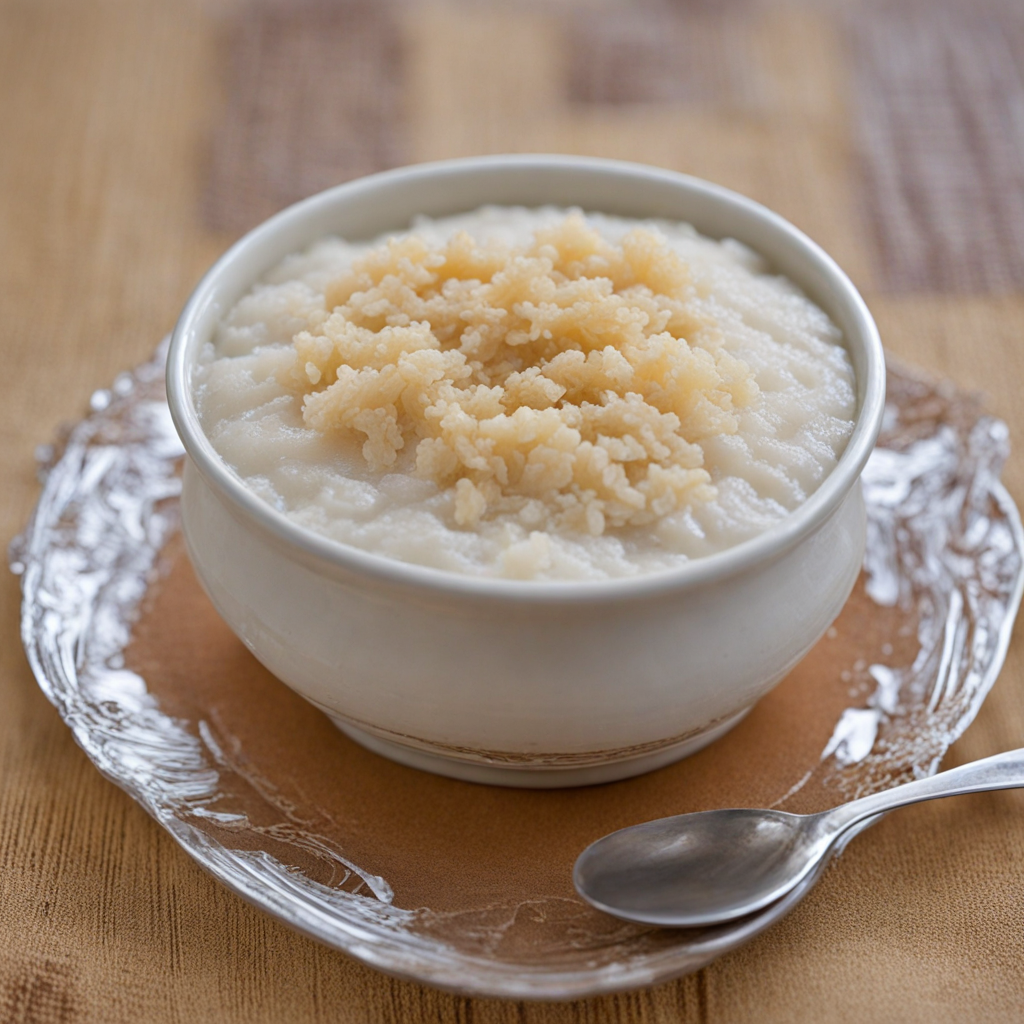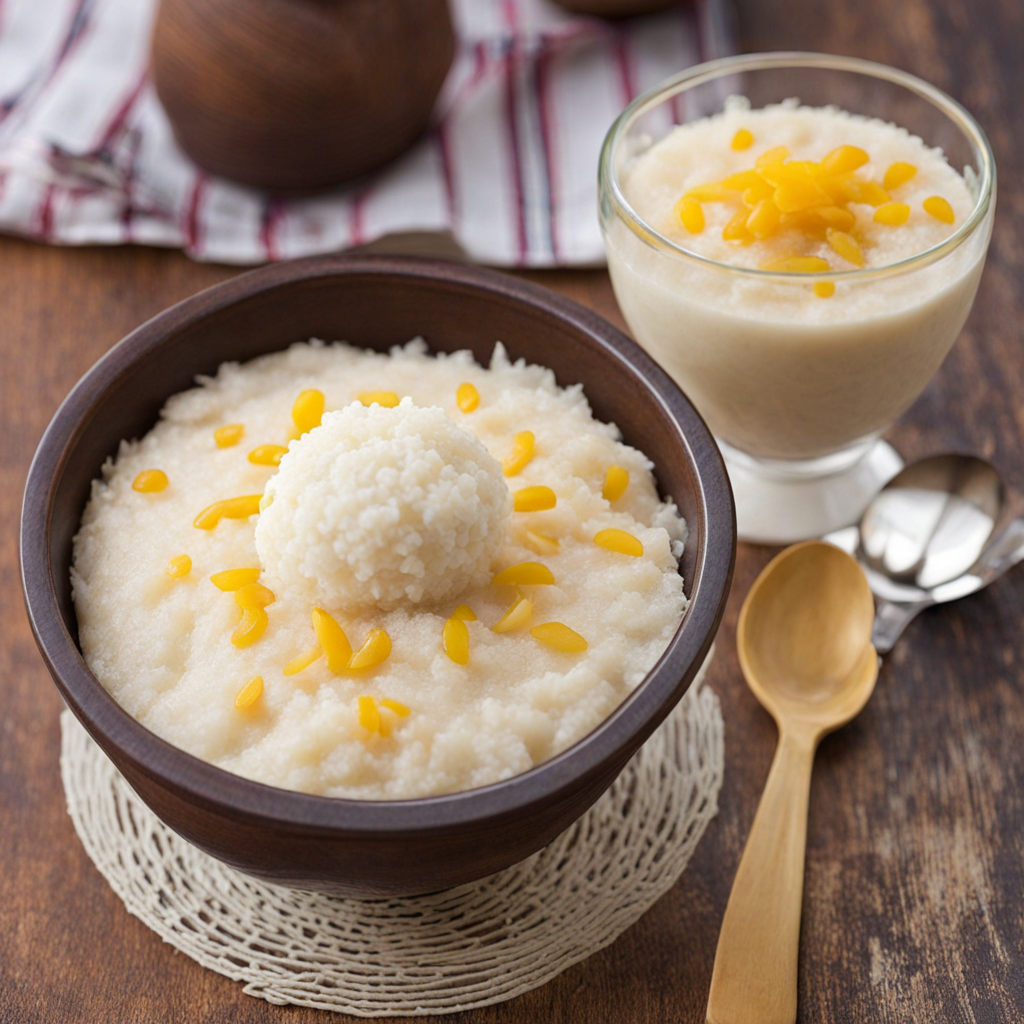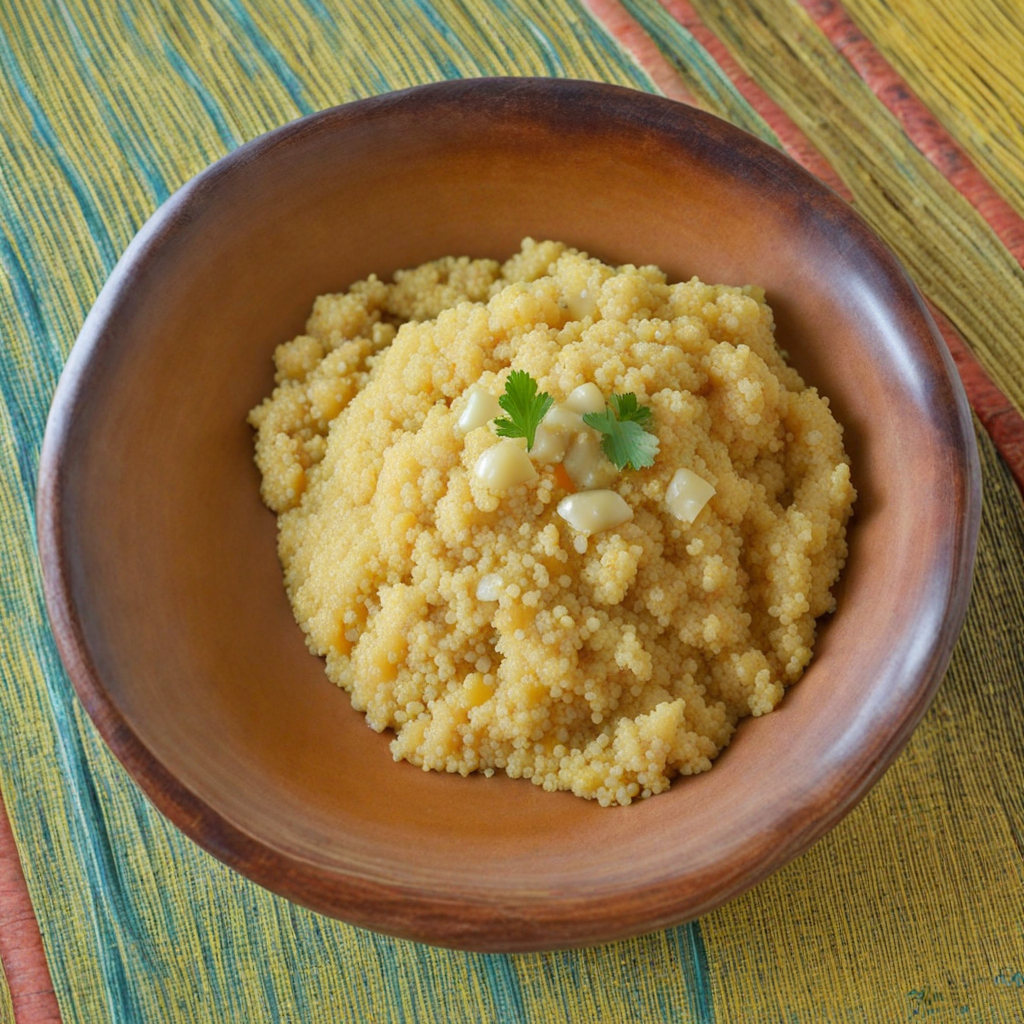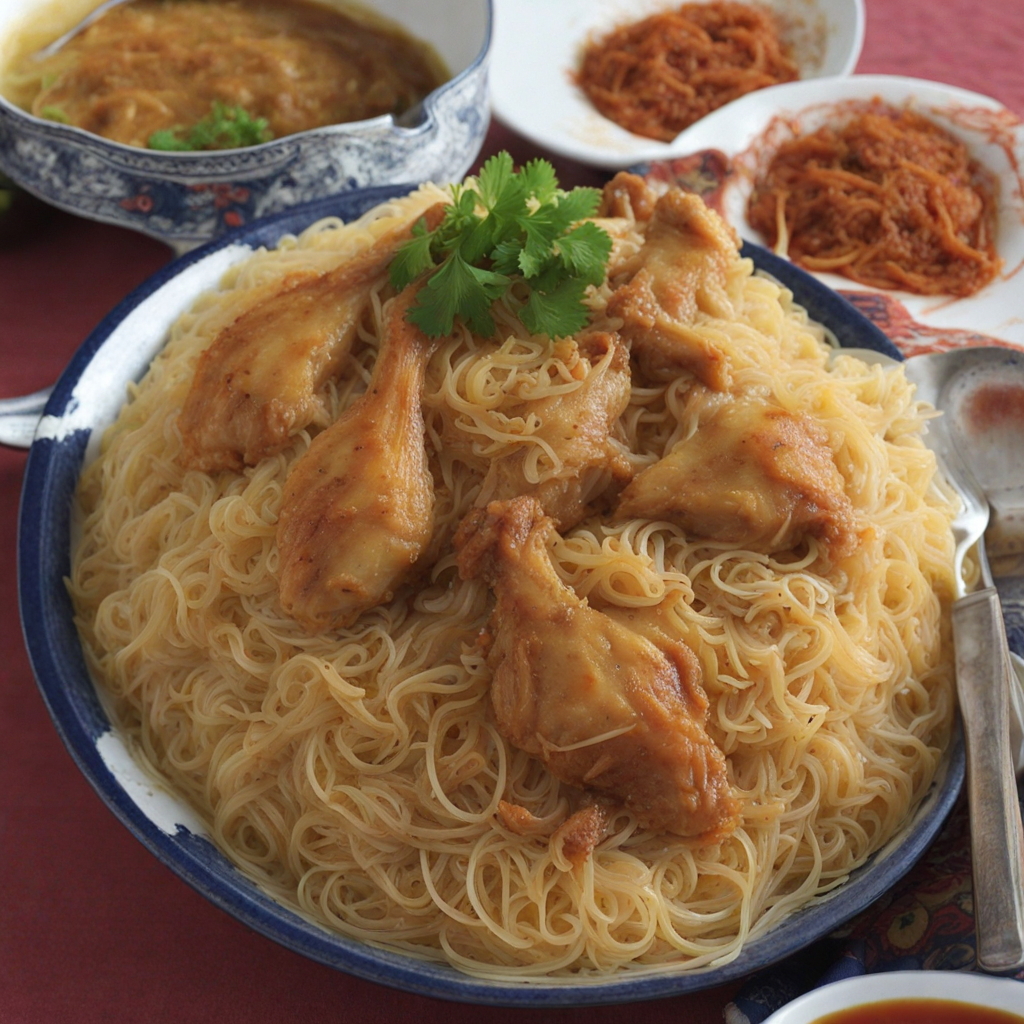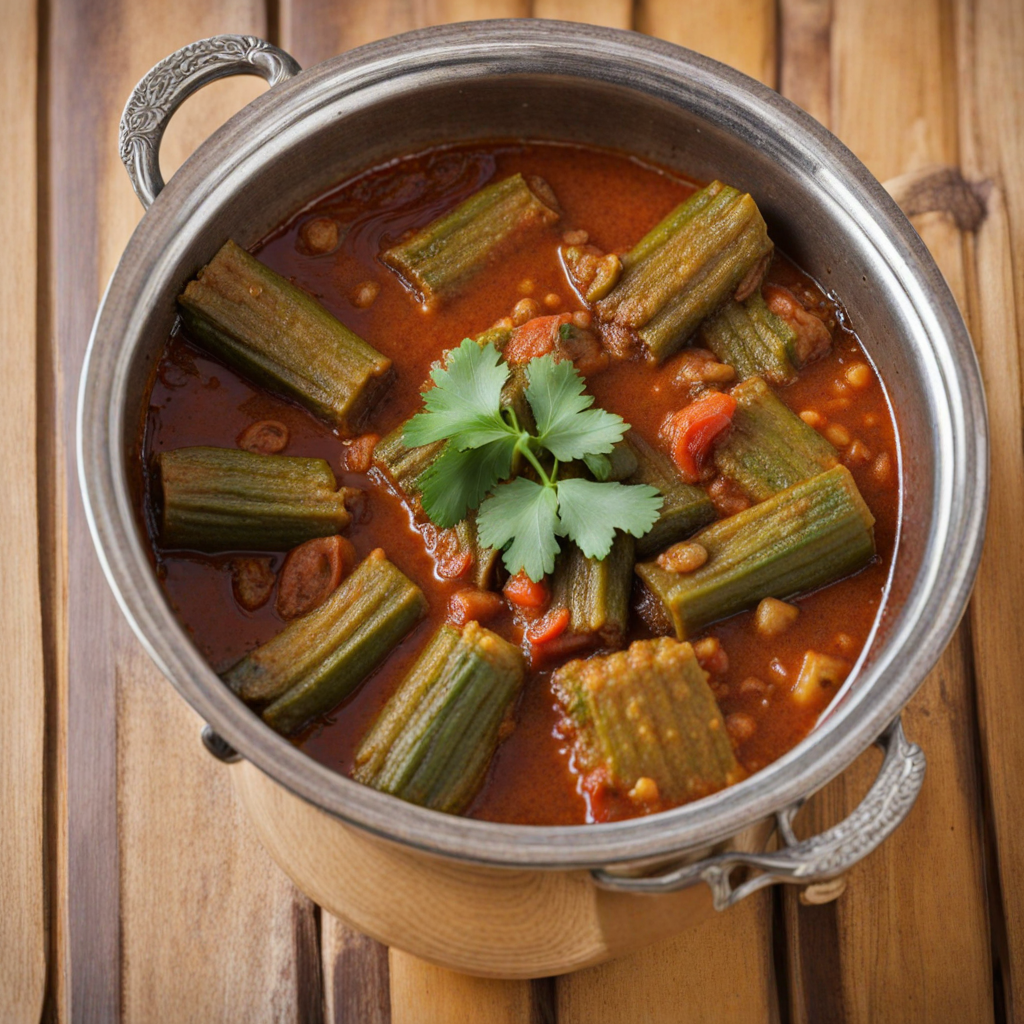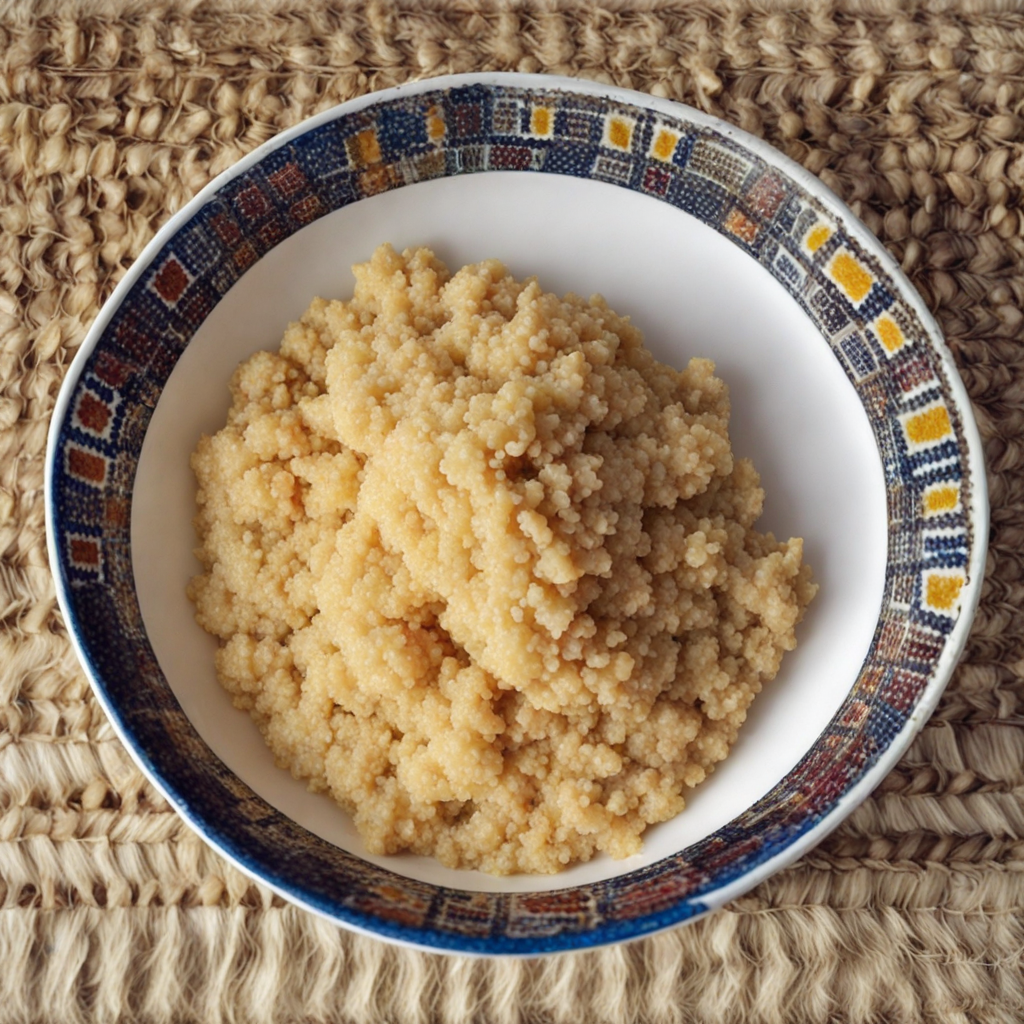Sombi
Sombi is a delightful Senegalese dish that showcases the rich culinary heritage of the region. This unique preparation is made primarily from a blend of rice and sweetened condensed milk, creating a creamy, slightly sticky texture that is both comforting and satisfying. The rice is traditionally cooked until soft, then mixed with the sweetened milk, which adds a luxurious sweetness that contrasts beautifully with the dish's mild flavor. Often, it is garnished with a sprinkle of cinnamon or nutmeg, enhancing its aromatic qualities and making it a visually appealing dessert. In addition to the foundational ingredients, Sombi may be infused with various flavors and textures, such as fresh coconut, raisins, or nuts, which introduce delightful surprises in every bite. The incorporation of these components not only elevates the dish but also reflects the local customs and availability of ingredients in Senegal. Enjoying Sombi is often a communal experience, bringing friends and family together to savor the dish during celebrations or special occasions, making it more than just a meal, but a shared memory. The experience of tasting Sombi is one that evokes warmth and joy. The sweetness from the condensed milk combined with the subtle earthiness of the rice creates a harmonious balance that dances on the palate. It's a dish that invites you to slow down and enjoy each mouthful, whether served warm or chilled. For those seeking to explore new flavors, Sombi is a must-try, offering a glimpse into the heart of Senegalese culinary tradition and the rich tapestry of flavors that define this vibrant culture.
How It Became This Dish
Sombi: A Culinary Journey Through Senegal's Rich Heritage Sombi, also known as "samb," is a traditional rice pudding that holds a cherished place in Senegalese cuisine. With its sweet, creamy texture and aromatic spices, Sombi is not just a dish but a symbol of the cultural tapestry of Senegal, blending influences from indigenous practices, historical trade routes, and the diverse communities that have called this West African nation home. #### Origins of Sombi The origins of Sombi can be traced back to the ancient agricultural practices of the Senegalese people. The fertile soil along the Senegal River has been home to farming communities for centuries, where rice became a staple crop. The cultivation of rice in Senegal has historical roots dating back to the 15th century when it was introduced by the Portuguese and later cultivated extensively by the Wolof and other ethnic groups. Sombi, as a dish, is thought to have evolved from traditional methods of preparing rice and utilizing available ingredients. It is made using rice, water, sugar, milk (or coconut milk), and a blend of spices, often including vanilla or cinnamon. The method of boiling rice to create a pudding-like consistency can be seen as an adaptation of various cooking techniques found across Africa and beyond, where grains are cooked with liquids to create satisfying meals. #### Cultural Significance In Senegal, food is an integral part of social life and cultural identity. Sombi is often served during special occasions, celebrations, and religious events, marking significant moments in the lives of families and communities. It is particularly popular during the month of Ramadan when Muslims break their fast with this sweet treat, as its richness provides a comforting end to the day’s fasting. The dish is also commonly prepared for family gatherings, weddings, and communal feasts, reinforcing bonds among loved ones. The act of sharing Sombi is emblematic of hospitality, a value deeply ingrained in Senegalese culture. The preparation of Sombi often involves the participation of multiple family members, making it a communal activity that fosters unity and strengthens relationships. Moreover, Sombi is often associated with childhood memories, as it is a dish many Senegalese people grow up enjoying. This connection to nostalgia further solidifies its importance in the culinary landscape of the nation, evoking feelings of comfort and belonging. #### Ingredients and Preparation The core ingredients of Sombi reflect the agricultural bounty of Senegal. The rice used is typically a short-grain variety, which becomes sticky and creamy when cooked. Milk, whether cow's milk or the more traditional coconut milk, adds richness to the dish. Sugar provides sweetness, while spices like vanilla, cinnamon, and sometimes nutmeg infuse Sombi with aromatic warmth. To prepare Sombi, the rice is first rinsed and then boiled in water until tender. Once cooked, milk is added, along with sugar and spices, and the mixture is simmered until it thickens to a creamy consistency. The dish is often garnished with grated coconut or nuts, adding texture and flavor. This combination of simple, accessible ingredients makes Sombi a versatile dish, allowing for variations based on personal preferences or regional availability. Some families may add dried fruits or even chocolate, showcasing the creativity and adaptability of Senegalese cooking. #### Evolution Over Time As with many traditional dishes, Sombi has undergone transformation over the years, influenced by globalization, migration, and changing culinary trends. The introduction of new ingredients, such as condensed milk or different types of sweeteners, has led to modern interpretations of the classic recipe. Additionally, the rise of food tourism and the global interest in African cuisines have brought Sombi to international attention, allowing it to find a place in the culinary scene beyond Senegal. Chefs and home cooks alike are experimenting with Sombi, incorporating it into fusion dishes or presenting it in contemporary settings. This evolution reflects the dynamic nature of food culture, where traditional recipes are continuously reimagined while still honoring their heritage. The accessibility of Sombi through social media platforms has also played a significant role in its resurgence. Food bloggers and influencers from Senegal and the diaspora share their unique takes on the dish, inspiring a new generation to explore and celebrate their culinary heritage. #### Sombi in the Diaspora As Senegalese communities have migrated across the globe, Sombi has traveled with them, becoming a cherished dish in various parts of the world. In cities with significant Senegalese populations, such as Paris, New York, and Toronto, Sombi can be found in restaurants and homes, serving as a bridge connecting the diaspora to their roots. In these contexts, Sombi serves not only as a food item but as a cultural ambassador, inviting others to experience the flavors of Senegal. Events celebrating Senegalese culture often feature Sombi, showcasing its role as both a comfort food and a symbol of national pride. #### Conclusion Sombi is more than just a delightful rice pudding; it encapsulates the heart of Senegalese culture and history. From its agricultural origins to its significance in familial and communal gatherings, Sombi represents the resilience and creativity of the Senegalese people. As it adapts to new influences and reaches global audiences, Sombi continues to tell the story of a nation rich in culinary tradition, inviting everyone to savor a taste of Senegal's vibrant heritage. Whether enjoyed in a bustling Dakar market or a cozy kitchen in a foreign land, Sombi remains a beloved dish that nourishes both body and soul, bridging generations and cultures through its sweet, comforting embrace.
You may like
Discover local flavors from Senegal


